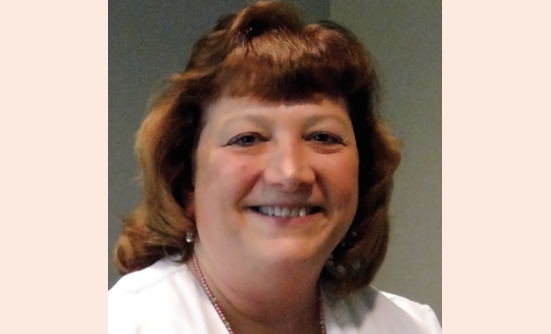Myelodysplastic syndromes (also known as MDS) represent a group of diseases classified as cancer that involves the cells in the blood and bone marrow.1 Blood cells are developed from a type of blood-forming cells called stem cells, which are produced in the bone marrow. Stems cells form immature (blasts) cells that grow and divide to become mature red blood cells, white blood cells, and platelets.
White blood cells help to fight infections, red blood cells carry oxygen throughout the body, and platelets help to control bleeding. The inside of each cell contains instructions (or “genes”) for making new blood cells and controlling the function of cells. Genes have the potential to change or mutate abnormally (called “mutations”), but scientists have not yet identified the causes for gene mutations.2
Myelodysplastic syndromes occur when gene mutations cause the stem cells to stop making new blood cells or function properly. Instead, the damaged bone marrow makes “dysplastic” (abnormal) blood cells, thereby decreasing the number of healthy blood cells in the body. When the unhealthy cells multiply and overcrowd the bone marrow, leaving no room for healthy blood cells, the result is myelodysplastic syndromes.2
Risk Factors
The following groups of people are at an increased risk for myelodysplastic syndromes3,4:
- White men
- People older than age 60
- People with European heritage
- Exposure to environmental or occupation hazards such as benzene, tobacco smoke, and other toxins may also increase the risk for myelodysplastic syndromes
Although this type of cancer can cause changes in our chromosomes, it is not thought to be an inherited type of cancer from a parent to a child and therefore does not typically run in families.
The exact cause of myelodysplastic syndromes that is not linked to another cancer (called “primary cancer”) is unknown. Researchers believe that the cause for primary myelodysplastic syndromes is related to a gradual accumulation of mutations in the stem cells, which usually occurs as people age.
In addition, myelodysplastic syndromes can be caused by cancer treatment (such as chemotherapy or radiation therapy), which is therefore called “secondary” myelodysplastic syndromes. Finally, patients with rare inherited bone marrow disorders or bone marrow failure are at a small increased risk for treatment-related (or secondary) myelodysplastic syndromes.1
Diagnosis
The diagnosis of myelodysplastic syndromes is made with a blood test. Your doctor may order blood tests such as a complete blood count, with a differential, to measure your blood cells, as well as other tests. (A differential diagnosis measures the different types of white blood cells, including neutrophils, monocytes, and lymphocytes.)1,2
A bone marrow biopsy and aspiration are used to confirm the diagnosis of myelodysplastic syndromes. In a bone marrow biopsy, small samples of bone tissue and soft bone marrow are removed and tested for disease, and in a bone marrow aspiration, liquid bone marrow is removed from the inside of the bone and is tested.
Your doctor may also use a test called “fluorescence in situ hybridization” to detect specific changes in cells with chromosomal abnormalities, as well as molecular testing to look for gene mutations associated with myelodysplastic syndromes.
Prognosis
Myelodysplastic syndromes are classified into risk categories, which help doctors to choose the best treatment for the individual patient and understand the likelihood of disease progression. Low-risk myelodysplastic syndromes progress slowly; intermediate-risk or high-risk myelodysplastic syndromes progress more rapidly.
High-risk myelodysplastic syndromes can also progress to a very aggressive type of cancer, called acute myeloid leukemia (AML). AML is difficult to treat, but only a small number of cases of myelodysplastic syndromes will progress to AML.2-4
What Are the Treatment Options?
Myelodysplastic syndromes are a complex set of diseases with multiple treatment options that differ from patient to patient. Patients with myelodysplastic syndromes may have different symptoms, which require different treatment approaches to target the specific symptoms.
The treatment options depend on many factors, including the myelodysplastic syndromes risk category, symptoms, test results, the patient’s goals of symptom control and quality of life, the need for blood transfusions, and hospitalizations. The treatment options can be divided into 3 main categories, including (1) supportive care, (2) lowintensity treatments, and (3) highintensity treatments.1,5
Supportive care is used to manage, relieve, or control the symptoms of myelodysplastic syndromes and improve the patient’s quality of life. Doctors may monitor the blood tests frequently to administer blood or platelet transfusions, if the red blood cells or platelet counts are low. Antibiotics can be administered to prevent infections if the white blood cells are low. Other medications may also be used to increase the growth of red or white blood cells. However, supportive care does not lead to a cure and does not treat the cause of myelodysplastic syndromes; rather, it treats the symptoms.1-3,5
Low-intensity treatment is used for patients with low-risk myelodysplastic syndromes and normally does not cause serious side effects; therefore, hospitalization is usually not needed. Low-dose chemotherapy drugs, such as azacitidine or lenalidomide, are administered in the clinic or in the outpatient setting. The goal is to help the bone marrow make new healthy blood cells that will function properly. In some types of myelodysplastic syndromes, the immune system doesn’t work properly and starts to attack itself, thus decreasing the production of cells in the bone marrow. Immunosuppressant drugs, such as alemtuzumab, anti-thymocyte globulin, cyclosporine, and tacrolimus, are used to stop the immune system from attacking the bone marrow.5
High-intensity treatments include high-dose chemotherapy and stem-cell transplant, which are used to treat high-risk myelodysplastic syndromes. High dose chemotherapy can cause serious side effects and requires hospitalization for close monitoring.
Stem-cell transplant is the treatment with the best potential for a cure of myelodysplastic syndromes or a long-term remission. It requires very high doses of chemotherapy to destroy all cells in the bone marrow, which is then followed by healthy blood cells from a donor.
However, a stem-cell transplant is associated with serious and potential long-term side effects, and is recommended for patients without serious medical conditions who are under age 75.2,5
Finally, participation in a clinical trial is another option that allows patients to receive new tests or treatments for myelodysplastic syndromes that are not available for the general public. Talk with your doctors to get information on available clinical trials and if this is a good option for you.
What If I’m Diagnosed with Myelodysplastic Syndromes?
Find a doctor who specializes in treating patients with myelodysplastic syndromes. Talk to your doctor about your test results and ask about treatment options.
A hematology nurse navigator is a patient advocate who could help you understand your treatment plan and guide you throughout your cancer journey. Finally, search for support groups to learn more about your cancer, by asking questions, and look for resources that can guide you through this journey.
Key Points
- The cause of primary myelodysplastic syndromes is related to a gradual accumulation of mutations in our stem cells, which usually occurs with aging
- Myelodysplastic syndromes can also be caused by cancer treatment
- Find a hematologist or oncologist who specializes in treating patients with myelodysplastic syndromes to ensure the best treatment
- Talk to your doctor about your test results and ask about your treatment options
- A nurse navigator could help you understand your treatment plan and guide you throughout your journey
- Search for support group to learn more about your cancer, ask questions, and look for informative resources
References
- Leukemia & Lymphoma Society. Myelodysplastic syndromes. www.lls.org/disease-information/myelodysplastic-syndromes.
- National Comprehensive Cancer Network. NCCN Guidelines for Patients: Myelodysplastic Syndromes. 2018. www.nccn.org/patients/guidelines/content/PDF/mds.pdf.
- Estey EH. Patient education: myelodysplastic syndromes (MDS) in adults (Beyond the Basics). UpToDate. Updated December 6, 2017. www.uptodate.com/contents/myelodysplastic-syndromes-mds-in-adults-beyond-the-basics.
- The Aplastic Anemia and MDS International Foundation. Myelodysplastic syndromes (MDS). www.aamds.org/diseases/mds.
- American Cancer Society. Myelodysplastic syndromes. www.cancer.org/cancer/myelodysplastic-syndrome.html.
Patient Resources
American Cancer Society
https://www.cancer.org/cancer/myelodysplastic-syndrome.html/
Leukemia & Lymphoma Society
https://www.lls.org/disease-information/myelodysplastic-syndromes/
National Cancer Institute
https://www.cancer.gov/types/myeloproliferative/patient/myelodysplastic-treatment-pdq#_1/
The Myelodysplastic Syndromes Foundation
https://www.mds-foundation.org/what-is-mds

















